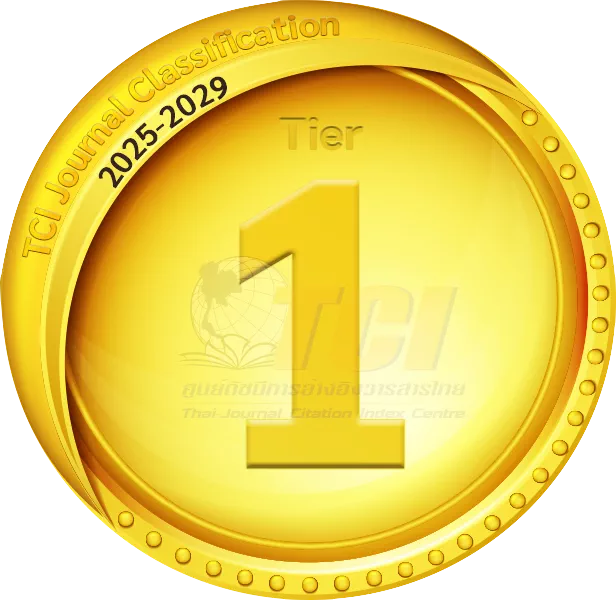Clil in Genetics: Class Activity and English Language Usage in Classroom
Keywords:
CLIL in Genetics, Genetics teaching, Teaching Biology, Learning achievement, Attitude testAbstract
Utilization of the English language to access scientific knowledge is essential to learning. Therefore, many schools have developed the Integrated English Program (IEP), to enable students to develop both academic content and language skill. Teaching genetics by using English as a medium, is challenging for non-native English speaking teachers as there are many specialized terms in the content to be delivered. Students’ confidence in using the language in authentic situations seem low and learner engagement is often lacking in such traditional educational settings. The purpose of this study is to investigate how content and language integrated learning (CLIL) impact on student’s attitudes, learning achievement and use English of students' when applying CLIL in teaching Genetics. The class activities were designed as six steps in delivering the program. The result indicates that both learner engagement and students’ confidence in using the language are characteristic. It can also be noted that content integration, with extensive focus on authentic materials and cooperation, promote language development. As well as learning achievement with a higher score after using such integration. Nevertheless, the main challenge outlined by the participants is the language barrier. Hence, planning of the teaching units, as to provide the right support and challenges for the different learners, and to design the tasks so that natural collaboration becomes a key factor for introducing a content integrated collaborative language classroom.
References
Auckara-aree, N. (2015). khwāmkhaočhai khlātkhlư̄an kīeokap phanthu sāt [Misunderstandings about genetics]. Retrieved April 1, 2019, from http://biology.ipst.ac.th/?p=2402
Anderson, L. W., & Krathwohl, D. R. (2001). A taxonomy for learning, teaching, and assessing: A revision of Bloom’s taxonomy of educational objectives. New York: Addison Wesley Longman.
Benitez-Castro, Miguel-Angel & Adan-Nieto, Miguel. (2007). Teaching science in CLIL: A sample lesson plan for the non-linguistic areas. GRETA, A Journal for Teachers of English (ISSN: 1989-7146).
Bently, K. (2007). Teaching science through English - a CLIL Approach. Cambridge: CUP
Bentley, K. (2010). The TKT teaching knowledge test cause. Cambridge: CUP
Bingimlas, K. A. (2009). Barriers to the Successful Integration of ICT in Teaching and Learning Environments: A Review of the Literature. Eurasia Journal of Mathematics, Science and Technology Education, 5(3), 235-245. https://doi.org/10.12973/ejmste/75275
Booncherdchoo, S. L., Saphuksri, S., Songsombat, T., Wongpoodpraw, N. (2018). kānphatthanā laksūt phāsā ʻAngkrit (English Program ) rōngrīan sāthit Mahāwitthayālai Sinlapākō̜n ( pathommawai læ prathom sưksā ) radap pathommawai [The English Program Curriculum Development at the Demonstration School of Silpakorn University (Early Childhood and Elementary) Early Childhood Level]. Silpakorn Educational Research Journal, Volume (10), 35-42
Brinton, D., Snow, M. A., & Wesche, M. B. (1989). Content-based second language instruction. Boston: Heinle & Heinle Publishers.
Buntting, Catherine M.; Campbell, Alison; Coll, Richard K. & Jones, Alister. (2003). But I Didn’t Do Biology at High School. Paper presented at the annual meeting of the Australasian Science Education Association, 10-12 July 2003. Melbourne
Calviño, M. A. M. (2012). Content and language integrated learning. Tlatemoani-Revista Academica de Investigacion, April (9), 1-11.
Colye, D. (2007) Content and Language Integrated Learning: Towards a Connected Research Agenda for CLIL Pedagogies, International Journal of Bilingual Education and Bilingualism, 10:5, 543-562, DOI: 10.2167/beb459.0
Coyle, D., Hood, P., & Marsh, D. (2010). Content and Language Integrated Learning. Cambridge, United Kingdom: Cambridge University Press.
Coyle, D., Philip, H., & David, M. (2011). CLIL content and language integrated learning (3rd ed.). New York: Cambridge University Press.
Dalton-Puffer, C. (2007). Discourse in content and language integrated learning (CLIL) classrooms. Amsterdam: John Benjamins Pub.
Drubin, D. G., & Kellogg, D. R. (2012). English as the universal language of science: opportunities and challenges. Molecular biology of the cell, 23(8), 1399. doi:10.1091/mbc.E12-02-0108
Elston, R. C., Satagopan, J. M., & Sun, S. (2012). Genetic terminology. Methods in molecular biology (Clifton, N.J.), 850, 1–9. doi:10.1007/978-1-61779-555-8_1
Kamanee, T. (2011). sāt kānsō̜n [teaching pedagogy]. Bangkok: Chilalongkorn University Printing House
Kewara, P. & Prabjandee, D. (2018). CLIL Teacher Professional Development for Content Teachers in Thailand. Iranian Journal of Language Teaching Research. 6. 93-108.
Larsing S. (2016). kānsưksā phon samrit thāngkān rīan læ čhētakhati tō̜ witthayāsāt dōi chai kānsō̜n bǣp sư̄pso̜ hā khwāmrū (hā E) dūai sư̄ prasom rư̄ang rabop prasāt læ ʻawaiyawa rap khwāmrū sưk samrap nakrīan chan matthayommasưksā pī thī hā [The study of learning achievement and attitude towards science by using inquirymethod with multimedia on the nervous system and sense organsfor 11th grade students.]. Silpakorn Educational Research Journal, Volume (8), 1243-1248
Likert, R. A. (1932). Technique for the Measurement of Attitude. Archives Psychological. 3(1), pp. 42-48.
Luecha Ladachart. (2015). Qualitative research for science teacher. Bangkok: Chilalongkorn University Printing House
Manten, A. A. (1968). English as a scientific language. Review of Palaeobotany and Palynology, 7(3), 145–148. doi:10.1016/0034-6667(68)90021-3
McGroarty, M., & Acton, W. (1998). Constructive and constructivist challenges for applied linguistics. Author's reply. Language learning, 48(4), 591-629.
Nanthaya Auckara-aree. (2015). Misunderstandings about genetics. The institute for the promotion of teaching science and technology. Retrieved April 29, 2019, from http://biology.ipst.ac.th/?p=2402
Paperback Oxford English Dictionary. (2012).Printed in Great Britain on acid-free paper by Clays Ltd, St.Ives plc. Watson, J.D., & Crick, F.H.C. (1953) Molecular structure of nucleic acid. Retrieved October from 10, 2018, Nature Publishing Group Website: http://www.sns.ias.edu/~tlusty/courses/landmark/WatsonCrick1953.pdf
Punwalai Kewara. (2017). Integrated English learning: concepts for Thai teachers. Journal of Education, 27(1), 28-40
Downloads
Published
How to Cite
Issue
Section
License
The submitting author warrants that the submission is original and that she/he is the author of the submission together with the named co-authors; to the extend the submission incorporates text passages, figures, data, or other material from the work of others, the submitting author has obtained any necessary permission.
Articles in this journal are published under the Creative Commons Attribution License (CC-BY What does this mean?). This is to get more legal certainty about what readers can do with published articles, and thus a wider dissemination and archiving, which in turn makes publishing with this journal more valuable for you, the authors.



